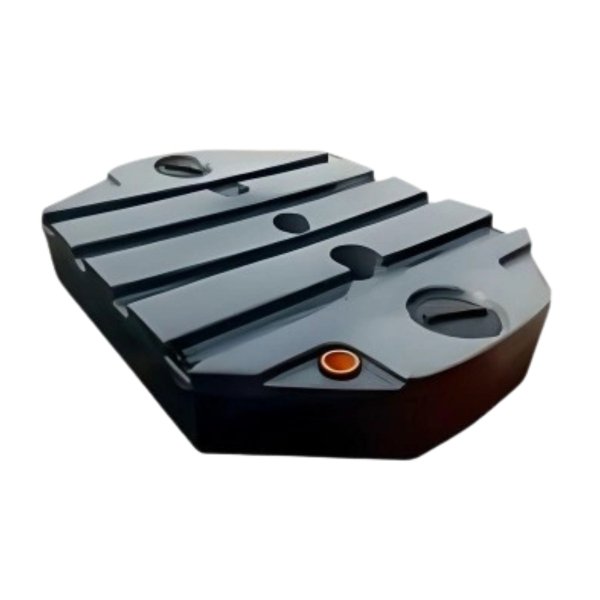2,500 Litre Cabin Waste Water Effluent tank
The 2,500 Litre Cabin Waste Water/Effluent Tank is a robust and reliable solution for storing and managing wastewater from portable cabins, site offices, event facilities, and temporary buildings. Designed for above or below ground installation, it is constructed from high-strength, corrosion-resistant materials to ensure durability in demanding environments. With a 2,500-litre capacity, it efficiently contains effluent until safe disposal. Its low-profile, space-saving design allows for easy transport, positioning, and maintenance. Ideal for construction sites, festivals, or remote locations, this effluent tank provides a hygienic, low-maintenance, and cost-effective waste management option, ensuring compliance with environmental and health regulations.
Description
Cabin Waste Water Effluent Tank: The Complete Guide
Managing wastewater in cabins, holiday homes, or off-grid properties can be challenging without access to mains sewage systems. That’s where the Cabin Waste Water Effluent Tank comes in. Designed for safe storage and disposal of wastewater, these tanks provide a reliable solution for both temporary and permanent setups.
Whether you own a small weekend cabin, operate a rental lodge, or manage a campsite, understanding how effluent tanks work, their benefits, and how to choose the right one is essential. This guide covers everything you need to know about cabin wastewater effluent tanks—including types, installation, maintenance, and FAQs.
What Is a Cabin Waste Water Effluent Tank?
A Cabin Waste Water Effluent Tank is a sealed storage container designed to collect wastewater from sinks, showers, toilets, and appliances within a cabin or small property. Unlike septic tanks, which allow partial treatment of wastewater, effluent tanks simply store the liquid until it can be removed and treated by a licensed waste disposal service.
They are typically installed above ground or shallow underground, depending on the site layout and owner preference.
Common Materials:
-
GRP (Glass Reinforced Plastic): Lightweight, durable, and resistant to corrosion.
-
Polyethylene (Plastic): Affordable and long-lasting.
-
Steel: Suitable for heavy-duty or larger-capacity requirements.
Benefits of Cabin Waste Water Effluent Tanks
-
Easy Installation – Most models only require a flat, stable base for installation.
-
Versatility – Suitable for seasonal cabins, holiday lodges, and off-grid homes.
-
Environmentally Safe – Fully sealed tanks prevent leaks and groundwater contamination.
-
Low Maintenance – Regular emptying is the primary requirement.
-
Compliance – Designed to meet environmental and building regulations in most regions.
Cabin Effluent Tank vs. Septic Tank
| Feature | Cabin Effluent Tank | Septic Tank |
|---|---|---|
| Function | Stores wastewater until emptied | Treats wastewater before dispersal |
| Installation | Simple, no soakaway needed | Requires drainage field or soakaway |
| Cost | Lower upfront cost | Higher due to installation needs |
| Maintenance | Emptying required regularly | Emptying every 12–18 months |
| Best For | Seasonal use, cabins, temporary setups | Permanent homes with drainage fields |
Choosing the Right Cabin Waste Water Effluent Tank
When selecting the ideal effluent tank for your cabin, consider the following factors:
-
Capacity – Choose based on occupancy and usage. A single-family cabin may need 2,500–3,000 litres, while a rental lodge or small group of cabins may require 5,000 litres or more.
-
Tank Placement – Decide between above ground for easier access or underground for aesthetic reasons.
-
Access for Emptying – Ensure the tank is positioned where a vacuum tanker can reach it.
-
Material Durability – For permanent cabins, a GRP or polyethylene tank is recommended.
-
Regulatory Compliance – Always check local environmental laws regarding wastewater storage.
Installation Guide
-
Site Preparation – Clear and level the ground or prepare a reinforced concrete base.
-
Tank Positioning – Place the tank in a location with easy vehicle access.
-
Connection – Connect inlet pipes from sinks, showers, and toilets.
-
Ventilation – Fit ventilation pipes to prevent odours and gas build-up.
-
Inspection & Testing – Check for leaks before full operation.
Maintenance and Emptying
Maintaining a Cabin Waste Water Effluent Tank is straightforward. Unlike septic tanks, there is no biological treatment inside, meaning regular emptying is essential.
-
Emptying Frequency: Usually every 4–6 weeks for seasonal cabins, more frequently for full-time use.
-
Professional Service: Always hire a licensed waste disposal company.
-
Cleaning: Rinse the interior after emptying to avoid odour and residue build-up.
-
Inspection: Look for cracks, leaks, or pipe blockages.
FAQs About Cabin Waste Water Effluent Tanks
1. How often do I need to empty a cabin effluent tank?
This depends on usage. A 2,500-litre tank for a small cabin may last 4–6 weeks before needing emptying, while larger tanks or heavy use require more frequent servicing.
2. Can effluent tanks be used year-round?
Yes. Effluent tanks can be used permanently or seasonally. Proper insulation and regular maintenance are key in colder climates.
3. Do effluent tanks smell?
When correctly sealed and vented, odours are minimal. Regular emptying and cleaning will also reduce the risk of smells.
4. Are effluent tanks eco-friendly?
Yes, they are safe as long as they are emptied by licensed waste carriers and maintained to prevent leaks. They protect groundwater and surrounding environments.
5. How long does a cabin waste water effluent tank last?
With proper care, GRP and polyethylene tanks can last over 20 years, while steel models may require earlier maintenance to prevent corrosion.
Conclusion
The Cabin Waste Water Effluent Tank is an essential solution for off-grid cabins, holiday homes, and seasonal lodges. With its easy installation, safe containment, and adaptability, it ensures wastewater is managed responsibly without the need for expensive drainage systems.
By choosing the right capacity, material, and placement, and by following regular maintenance schedules, you can enjoy peace of mind knowing your wastewater is handled safely and in compliance with environmental standards.
References
UK Environment Agency – Wastewater Storage Guidelines
BS EN 12566 Standards – Small Wastewater Treatment Systems
European Environmental Regulations – Effluent Management

Reviews
There are no reviews yet.